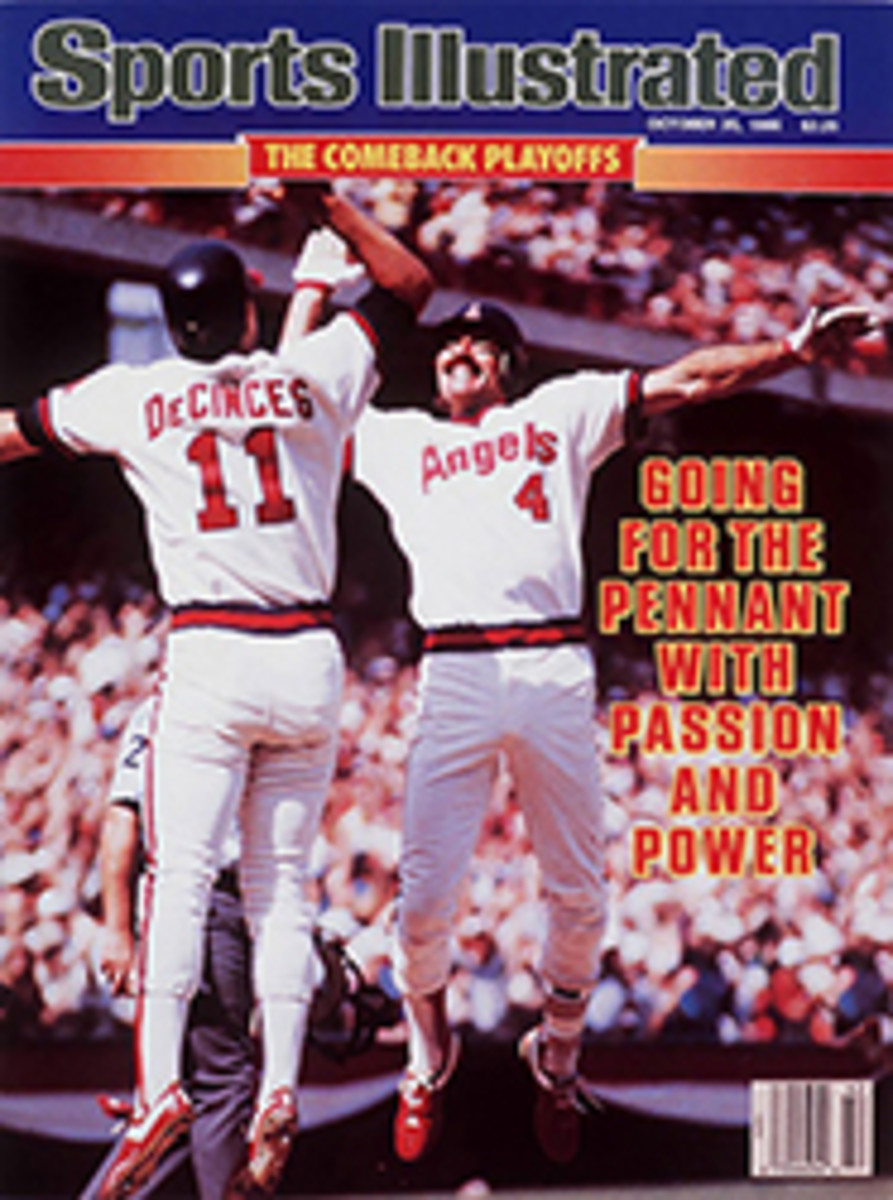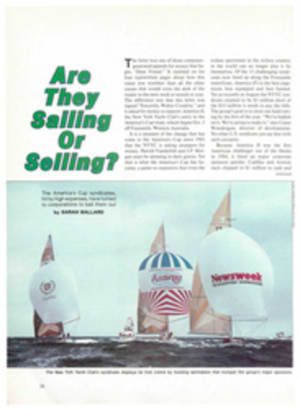
FOUND: CHARMING 2 BR, 1 BTH APT, IN THE LEFTFIELD STANDS, POLO GROUNDS
By the autumn of 1945, Horace Stoneham, owner of the New York Giants baseball team, knew he had a serious problem—and it wasn't that his team had finished in the second division for the last three years. It was the ballpark. The Giants' home, the Polo Grounds, was a comfortable, historic old place where the great John J. McGraw had managed the Giants to 10 pennants, where Babe Ruth had hit his first New York home runs, where Red Grange had made his debut as a pro football player and Jack Dempsey had knocked out Luis Firpo. But the playing area was ragged. Rumor had it that the grounds crews were spending more time on long, liquid lunches than on maintaining the field.
The situation was made all the more acute by Branch Rickey, president of the Brooklyn Dodgers. Whenever Stoneham and traveling secretary Eddie Brannick ventured to Ebbets Field, Rickey loved to crow about what great shape his own field was in.
After Rickey needled Stoneham one time too many, Horace went looking for help. His attention settled on Matthew Schwab Jr., one of the best grounds-keepers in the business, if not the best. Matty's grandfather, John Schwab, had first gone into the craft at Redland Field in Cincinnati in 1883. And Matty's father, Matthew Sr., was still with the Red-legs in the same capacity. As for Matty, well, he was the head groundskeeper at Ebbets Field. He was just what the Polo Grounds needed. So at the end of 1945, when Stoneham learned that Rickey, a legendarily tightfisted employer, had once again denied Matty a long-deserved, long-deferred raise, the Giants' owner sent Brannick to Schwab's winter home in Florida to ask Matty if he would care to come over to the Polo Grounds. Schwab said yes. Rickey woke up not too many mornings later to discover that Stoneham had swiped his head grounds-keeper and was taking him to Manhattan. In the never-ending war between the Giants and the Dodgers, it was a masterful shot.
One problem soon developed, however. Schwab lived with his wife, Rose, and four-year-old son, Jerry, in a nice apartment on President Street in Brooklyn. The commute by car to the Polo Grounds at 155th Street and 8th Avenue in Manhattan was a killer. For a short time Schwab and his family moved into the Concourse Plaza Hotel near the ballpark. That didn't work out very well. Too expensive, and anyway, what family wants to live in a hotel? Yet there was no convenient, reasonable housing anywhere near the Polo Grounds. That's when Schwab noticed some unused space below the leftfield grandstand at the ballpark.
"I asked Mr. Stoneham whether it would be possible to build a place to live right there," says 77-year-old Matty, who now lives in Fort Lauderdale. "He said it was unheard of. But Mr. Stoneham always took care of his employees. So he asked Joe Traynor, the park superintendent, to see what could be done."
Soon carpenters were at work under the grandstand, followed by electricians and plumbers. Eventually there emerged a cozy two-bedroom apartment with bath, kitchen and living room, plus a private entrance and free parking. In 1946, unbeknownst to most of the thousands of fans who pushed through the Polo Grounds turnstiles, the Schwab family took up residence at the ballpark, just beyond the outfield fence.
"The foul line," says Schwab, "was on the other side of my living room wall. Bobby Thomson's home run, the one that won us the pennant in 1951, landed on my roof."
There were windows on three sides of the apartment; two faced some subway repair yards across the street from the park and another looked out on an alley. Soon Matty began to dream about a fourth exposure. "I asked," he says with a sly chuckle, "if I could put in another window. You know, in the outfield wall facing the field. But Mr. Stoneham finally said no."
Only Rose had the slightest complaint: The place did get a little noisy from time to time, particularly during boisterous doubleheaders when the Dodgers were visiting. Imagine a party going on in an upstairs apartment with 56,000 people in attendance, half of whom hate the other half, and you get the idea.
Schwab may have been partway to paradise, but his son was already there. "The biggest backyard in Manhattan," Matty used to call the playing field. On warm summer nights, Jerry, an eight-year-old in 1950, would invite friends over, pitch a tent and camp out beneath the stars. The grassy turf that Sid Gordon and Thomson—and later Hall of Famers Monte Irvin and Willie Mays—roamed by daylight was Jerry's private play-ground for countless nights.
Even today those boyhood memories are vivid. "On some nights when I didn't camp out, I would get up every two hours to help my father move the sprinklers around the field," says Jerry, now the branch manager of a post office in Fort Lauderdale. "My father used to send me into the dugouts sometimes to turn hoses on or off. It was pitch black. I never knew what monsters might be waiting in the darkness." He laughs. "But none ever were."
Daylight brought the athletes, arriving for work. "There were three of us kids who were tolerated by the players," says Jerry, "though I was the only one who actually lived there. Me, Chris [son of Giant skipper Leo] Durocher and Dale [son of star pitcher Larry] Jansen. We wore New York Giants uniforms, just like the batboys. We had the run of the park. If we wanted to go somewhere we'd take one of the many underground tunnels and pop out of a manhole. We'd stand behind the batting cage and watch the pitchers. Then we'd work out with the players and shag flies in the outfield. There was only one place we knew not to go: the clubhouse after Durocher had slammed the door. That meant he was about to yell at his players."
Jerry was particularly close to pitcher Jim Hearn, but it was slugger Johnny Mize who was his boyhood hero. "I wore number 15 on my uniform, same as Mize, before they sold him to the Yankees. After he left, I still kept his number." Then there were the retired Hall of Famers who used to pass by: Mel Ott, Bill Terry, Carl Hubbell. Mays arrived in 1951 as a frightened rookie. Then in 1952 there came a 28-year-old rookie with an unorthodox pitch, Hoyt Wilhelm. He and Jerry took a liking to each other.
"Hoyt made me a whiz on my high school baseball team," Jerry says. "He taught me how to throw a knuckleball."
As the condition of the playing field improved under Schwab's scrupulous care, so did the Giants under Durocher. There was the miracle pennant in 1951, then the heady world championship in 1954. Schwab received a full share of the World Series money that year, plus a Series ring. But by then the team was starting to unravel. Irvin retired. Durocher quit. Thomson, Al Dark and Whitey Lockman were all traded.
At the same time, the neighborhood began to change, and the concrete-and-steel structure of the Polo Grounds, erected in 1911, began to creak. Inevitably, talk centered on sites for a new ballpark in New York. It all must have been terribly unsettling for the Schwab family. It was their home that people wanted to abandon.
"It would be hard to take if the Giants ever moved to another park," Matty Schwab commented in 1956. "Even if I found a place to live right across the street, I'd still feel like a commuter."
With no new park forthcoming in New York, Stoneham sent Schwab, among others, west to scout prospective playing fields. When the Giants did decide on another place to live, it was clear across the continent in San Francisco.
On Sept. 29, 1957, with some of the Polo Grounds' greats—Larry Doyle, Rube Marquard, Hubbell, Mrs. John J. McGraw—present, the last ball game was played in the old park. Dusty Rhodes hit a ball into the grandstand and scored the final Giant run in the Polo Grounds, but eighth-place Pittsburgh still won 9-1. Fittingly, it was a somber, overcast day. And the end, as Schwab had predicted, was hard to take. "I guess I'm dispossessed," Matty said as the gates finally clanked shut.
Well, not quite. The Schwabs went west with the team. Matty presided at Seals Stadium, then at Candlestick, although he couldn't really call either of them home. Jerry, a young man by this time, worked with the grounds crew before moving on to other things. Matty remained with the Giants until 1979, long enough to see Jerry's son become a bat-boy, the fifth generation of Schwabs to work on a big league ball field.
"I'm sorry I never went back to the Polo Grounds as an adult," Jerry said recently. "I would have liked to see it through the eyes of a grownup and compare it to my memories as a boy. But I never got back there. It bothers me." Demolition crews struck first, knocking down the old park in November 1964. With it went the Schwabs' apartment.
Rose passed away in May 1985. Matty, retired in Florida, still wears his 1954 World Series ring. Jerry lives a few blocks away. Both father and son can tell some wonderful stories about the time they lived in one of the most unusual accommodations in the history of American baseball.
PHOTO
NEW YORK HERALD TRIBUNE
Matty Schwab reads on his "front porch."
Noel Hynd is now working on a book about the New York Giants baseball club.

